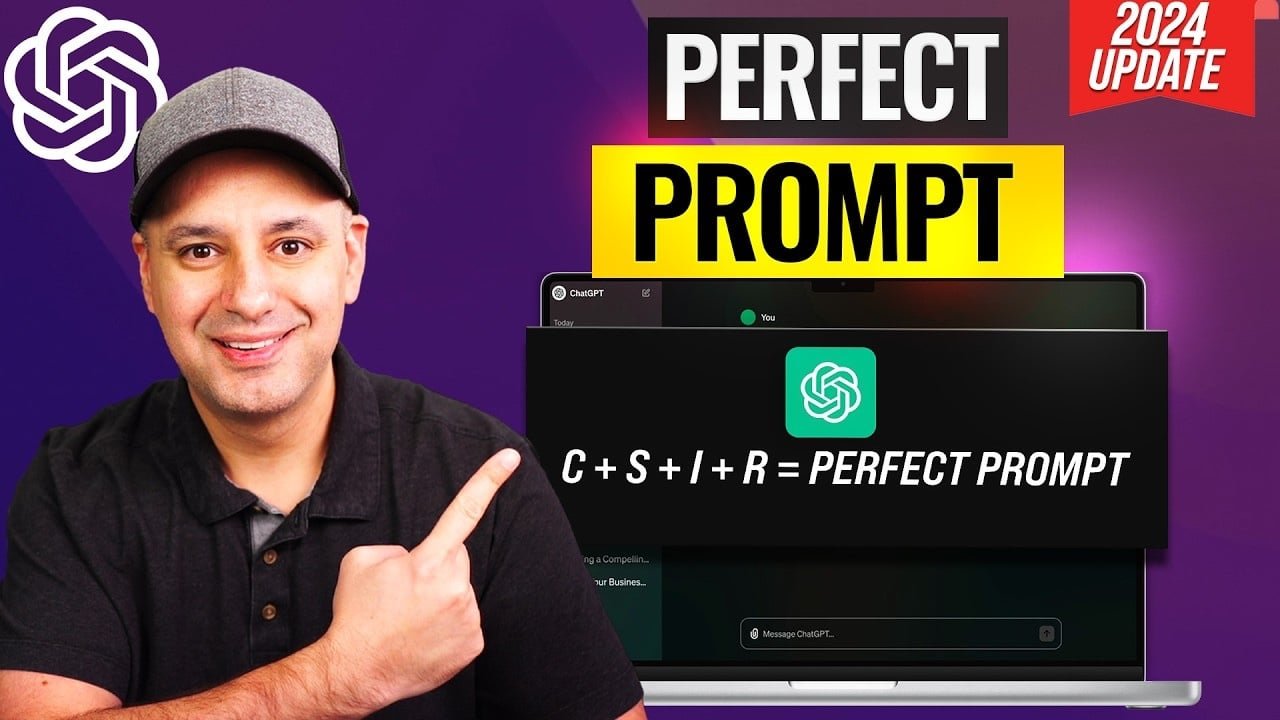
ChatGPT, the innovative language model developed by OpenAI, has transformed the way we interact with artificial intelligence. To fully harness its potential and obtain the most accurate, relevant, and useful responses, it is essential to understand the art of crafting effective prompts. The video below from Howfinity unveils a powerful four-component formula that will enable you to create prompts that elicit the best possible outputs from ChatGPT. The key components of this formula are context, specific information, intent or goal, and response format.
Establishing Context: Setting the Stage for Accurate Responses
The first component of the formula is establishing the appropriate context for your prompt. Context plays a vital role in helping ChatGPT understand the scenario, subject matter, or domain in which your query operates. By providing a clear and concise context, you enable the language model to focus its vast knowledge base on the relevant areas, ensuring more accurate and targeted responses. For instance, when inquiring about historical events, specifying the time period or the particular event in question significantly narrows down the scope of the query, allowing ChatGPT to provide information that is pertinent to your specific interest.
- Mention the specific domain or subject matter to guide ChatGPT’s focus
- Provide relevant background information to establish the context of your query
- Specify the time period, location, or any other contextual details that can help narrow down the scope
Providing Specific Information: The Key to Precise and Detailed Responses
The second component of the formula emphasizes the importance of providing specific and detailed information in your prompts. The more precise and targeted your query, the higher the quality of the response you can expect from ChatGPT. Instead of asking broad, open-ended questions, aim to include specific details, examples, or criteria that can guide the language model towards generating more relevant and useful information. For example, rather than simply asking ChatGPT to “tell me about technology,” consider framing your query as “Explain the impact of artificial intelligence on healthcare in the last decade.” By incorporating specific details, you enable ChatGPT to dive deeper into the subject matter and provide insights that are tailored to your unique requirements.
- Include specific details, examples, or criteria in your prompts
- Avoid broad, open-ended questions that may lead to generic responses
- Be clear and concise in communicating your information needs
Clarifying Intent or Goal: Guiding ChatGPT Towards Desired Outcomes
The third component of the formula focuses on clearly stating your intent or goal when interacting with ChatGPT. By explicitly communicating what you aim to achieve with your query, you provide the language model with a roadmap to follow, ensuring that its responses align with your expectations. Whether you require a summary, an analysis, a comparison, or a step-by-step guide, specifying your intent helps ChatGPT tailor its output to meet your specific needs. For instance, if you prompt ChatGPT with “Summarize the key points of the latest AI research paper,” it sets a clear objective for the language model to focus on, resulting in a concise and targeted response that highlights the most important aspects of the research.
- Clearly state your desired outcome or goal in the prompt
- Specify the type of response you expect (e.g., summary, analysis, comparison, step-by-step guide)
- Provide any additional criteria or constraints that should guide ChatGPT’s response
Specifying Response Format: Enhancing Clarity and Usability
The fourth and final component of the formula involves specifying the preferred format for ChatGPT’s response. By indicating how you would like the information to be structured and presented, you can significantly enhance the clarity, readability, and usability of the generated content. Whether you prefer a bulleted list, a numbered step-by-step guide, a table, or any other specific format, communicating your preference helps ChatGPT organize its output in a way that best suits your needs. For example, if you prompt ChatGPT with “Provide a step-by-step guide on how to set up a neural network,” the language model will generate a clear and concise set of instructions, making it easier for you to follow and implement the process.
- Specify the desired format for ChatGPT’s response (e.g., bullet points, numbered list, table)
- Indicate any specific structure or organization preferences
- Consider the intended use case and audience when selecting the response format
By integrating these four essential components—context, specific information, intent or goal, and response format—into your ChatGPT prompts, you can significantly enhance the quality, relevance, and usefulness of the generated responses. This powerful formula empowers you to harness the full potential of ChatGPT, allowing more productive and efficient interactions with the language model. As you master the art of crafting effective prompts, you will unlock new possibilities for leveraging artificial intelligence to support your research, analysis, writing, and decision-making processes.
Source & Image Credit: Howfinity
Latest Geeky Gadgets Deals
Disclosure: Some of our articles include affiliate links. If you buy something through one of these links, Geeky Gadgets may earn an affiliate commission. Learn about our Disclosure Policy.




